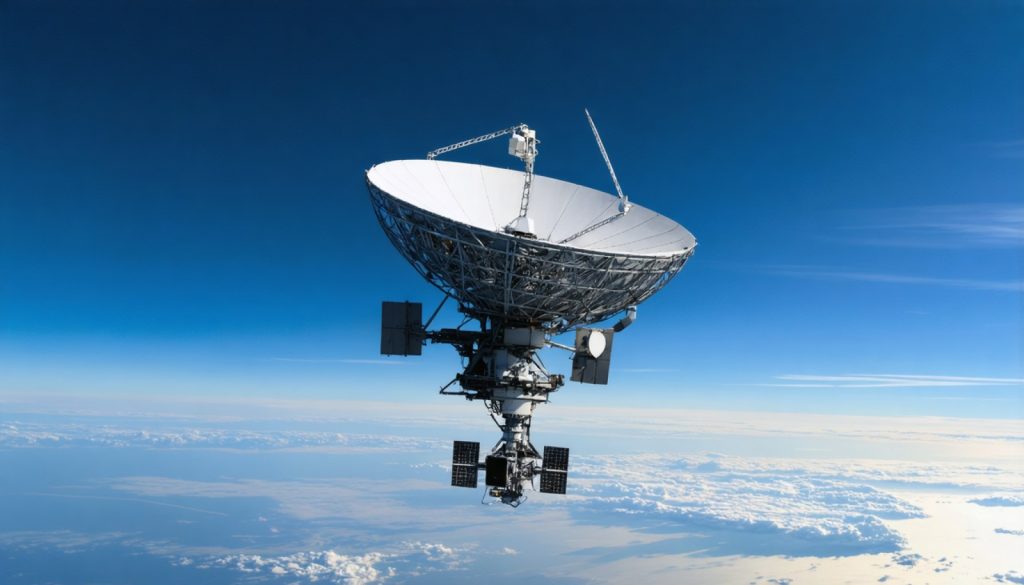
- Satellite internet has evolved into a robust solution for remote areas, overcoming limitations of traditional broadband.
- Low Earth orbit (LEO) satellites reduce latency, enhancing seamless digital communication and video calls.
- This technology fosters agricultural advancements in rural Africa by providing access to reliable weather data and modern techniques.
- Satellite internet transforms education and healthcare in isolated regions, enabling virtual classrooms and remote diagnostics.
- Though weather can disrupt signals, ongoing innovations improve resilience against such challenges.
- Installation is straightforward, requiring just a dish and modem, bringing global knowledge to remote locations.
- Satellite internet democratizes connectivity, uniting people globally and transforming the quality of life worldwide.
Imagine living atop a remote mountain or nestled deep in a lush forest, far from the humming connectivity urban life promises. For decades, these picturesque locales meant sacrificing speedy internet. But now, thanks to satellite internet, everywhere can become a digital hub without losing its natural charm.
Satellite internet, once a fledgling concept riddled with challenges, has matured into a robust solution for areas where traditional broadband falters. It sends internet data through the sky, using a network of satellites previously reserved for global communication and navigation tasks. Recent advances have made this technology more affordable and accessible, leading to a digital renaissance in underserved regions.
Visionary companies launch constellations of low Earth orbit (LEO) satellites, creating a web of connectivity above us. These satellites, unlike their bulky predecessors, are agile and operate closer to the Earth. This proximity slashes latency, a chronic issue in satellite communications, enabling tasks like video calls to flow seamlessly—no awkward delays or stuttered conversations.
In rural Africa, for instance, satellite internet has sparked a quiet revolution. Farmers, who once relied on anecdotal climate predictions, now access reliable weather data and modern agricultural techniques online. Their yields have soared, lifting communities out of subsistence farming and into profitable ventures.
But the impact doesn’t stop with agriculture. In isolated villages previously deprived of quality education, children now explore virtual classrooms brimming with interactive lessons. Healthcare, too, leaps forward. Medical professionals perform remote diagnostics, a lifeline for patients miles away from the nearest clinic.
Despite its wonders, satellite internet is not without hurdles. Weather phenomena like thunderstorms sometimes interfere, blotting out signals. Yet, engineers continuously innovate, crafting sleeker, more resilient technologies to withstand nature’s temper.
For consumers, satellite internet installations mean a modest dish and modem. Setup simplicity juxtaposes its sweeping capabilities, often taking mere days to go live. Suddenly, the world’s knowledge sits at every doorstep, ready to be explored.
This transformation personifies democratization. No longer are skyscraper-shrouded cities the exclusive gatekeepers of fast internet. Satellite internet delivers empowerment, uniting humanity in an ever-expanding digital tapestry. As the stars illuminate the night sky, so too does satellite internet shine as a beacon of connectivity and opportunity.
In embracing this technology, we usher in a new era where geography bows to ingenuity. Satellite internet not only bridges the digital divide but elevates the quality of life worldwide, proving that when people connect, possibilities become limitless.
Unlocking Global Connectivity: How Satellite Internet is Reshaping Our World
Exploring Satellite Internet: An In-Depth Guide
Satellite internet technology offers a paradigm shift in bridging the digital divide, especially in remote areas where traditional broadband infrastructure falters. As Starlink, Amazon’s Project Kuiper, and OneWeb deploy sophisticated constellations of low Earth orbit (LEO) satellites, the potential applications are boundless.
How Satellite Internet Works
1. Data Transmission: Satellite internet operates by sending data from a provider’s network through to satellites, which relay the data back to a dish installed at the customer’s location.
2. Components: Users require a satellite dish and modem as the main pieces of hardware. Installation is straightforward, requiring minimal expertise.
3. Connectivity and Latency: LEO satellites significantly reduce latency issues compared to earlier geostationary satellites. The proximity to Earth enables faster data transfer speeds, making activities such as video conferencing and online gaming possible without noticeable delays.
Real-World Use Cases
– Agriculture: In regions like rural Africa, satellite internet empowers farmers with real-time weather updates and market analytics, facilitating informed decisions that enhance productivity.
– Education: Students in remote areas access digital classrooms, enabling learning that would otherwise be unattainable due to geographic isolation.
– Healthcare: Telemedicine leverages satellite links to perform remote diagnostics, extending critical healthcare services to patients far from urban centers.
Market Forecasts and Industry Trends
– Growing Demand: Projected increases in the adoption of satellite internet are driven by the need for connectivity in rural and underserved regions. According to a MarketsandMarkets report, the satellite internet market size is expected to grow significantly over the next decade.
– Technological Advances: LEO satellite networks are set to expand, with innovative tech reducing interference from weather and other natural elements.
Pros and Cons Overview
Pros:
– Access to high-speed internet in remote locations
– Low latency with LEO satellite technology
– Crucial for emergency communications and disaster recovery
Cons:
– Potential signal disruptions during severe weather
– Initial installation costs can be high
– Monthly service fees may be more expensive than traditional broadband
Security and Sustainability Considerations
– Security: Satellite internet includes various built-in encryption methods to safeguard data. However, as with all internet systems, caution is advised regarding potential cyber threats.
– Sustainability: Companies are focusing on creating eco-friendly satellites made from sustainable materials and investing in mitigating the space debris problem.
Actionable Recommendations
1. Before Installing: Assess your internet needs, including the number of devices and peak usage times. Compare satellite internet plans to determine the best fit for your usage.
2. Considerations for Adverse Weather: While satellite dishes can handle normal weather conditions, ensure it’s installed in a clear, unobstructed space to minimize weather impact.
3. Monitoring Usage: Track your internet usage to avoid exceeding data caps, which could incur additional charges.
By embracing satellite internet technology, communities worldwide can tap into global opportunities, overcoming logistical challenges posed by geography. Whether it’s advancing educational outcomes or improving agricultural efficiency, satellite internet has positioned itself as an indispensable tool for progress.
For more insights, visit Starlink and explore how satellite internet can benefit you.



